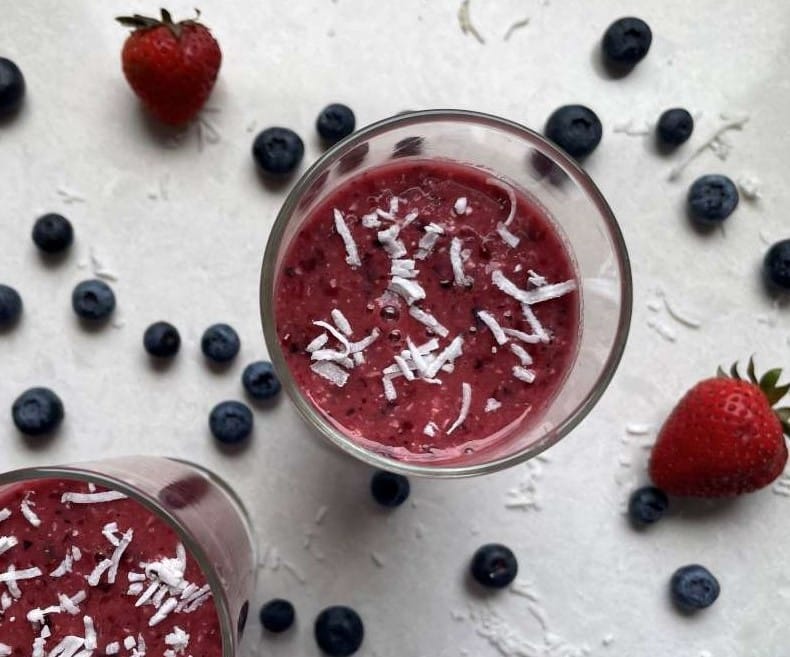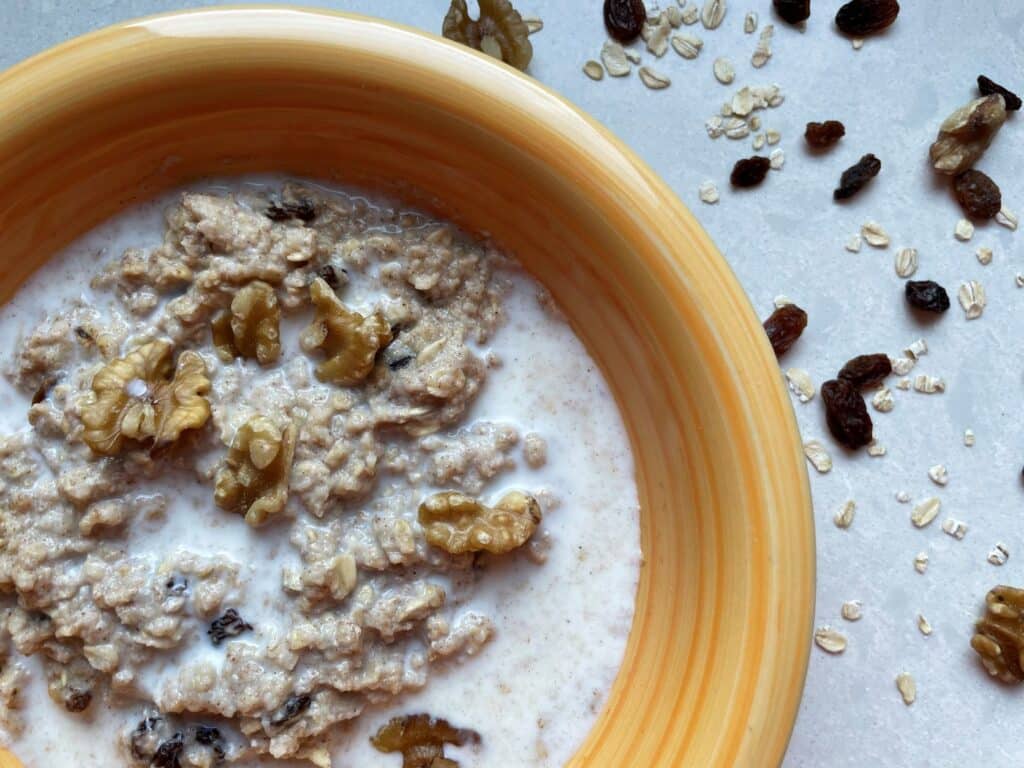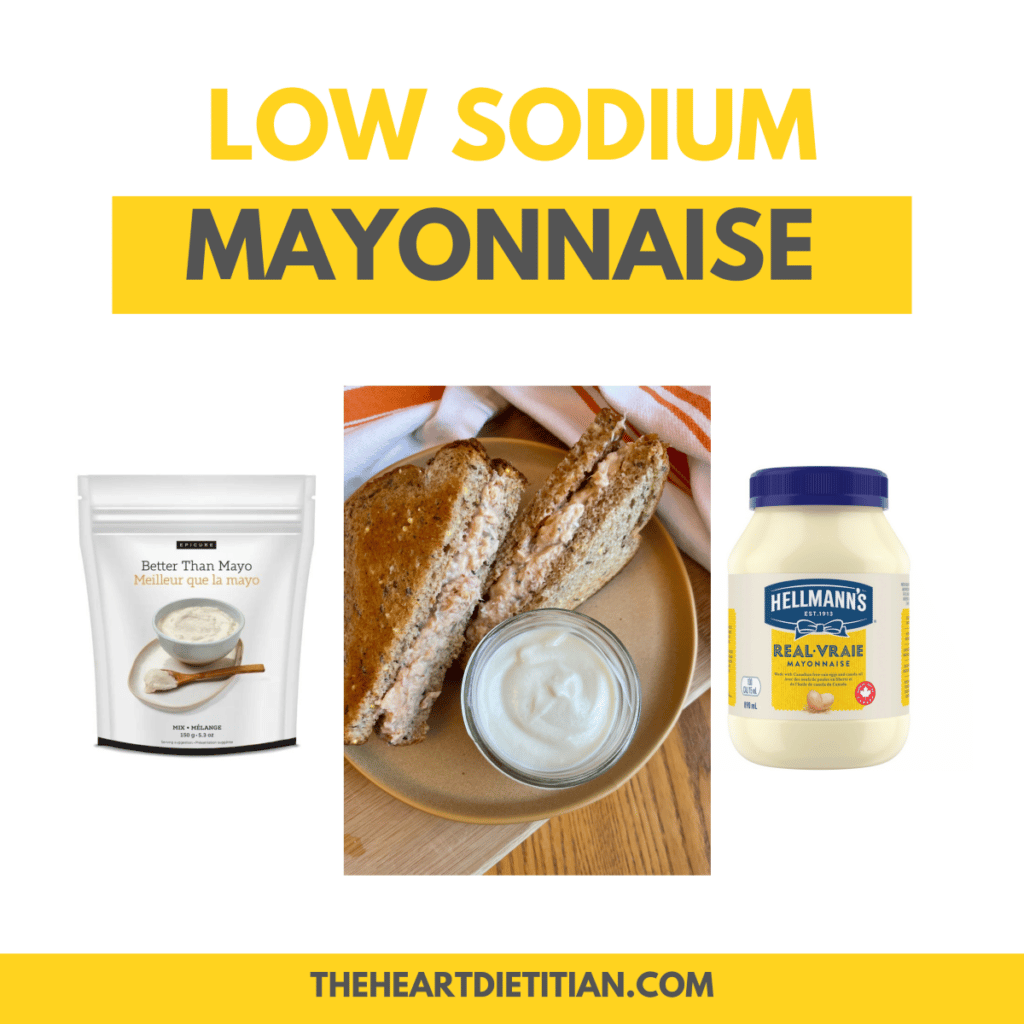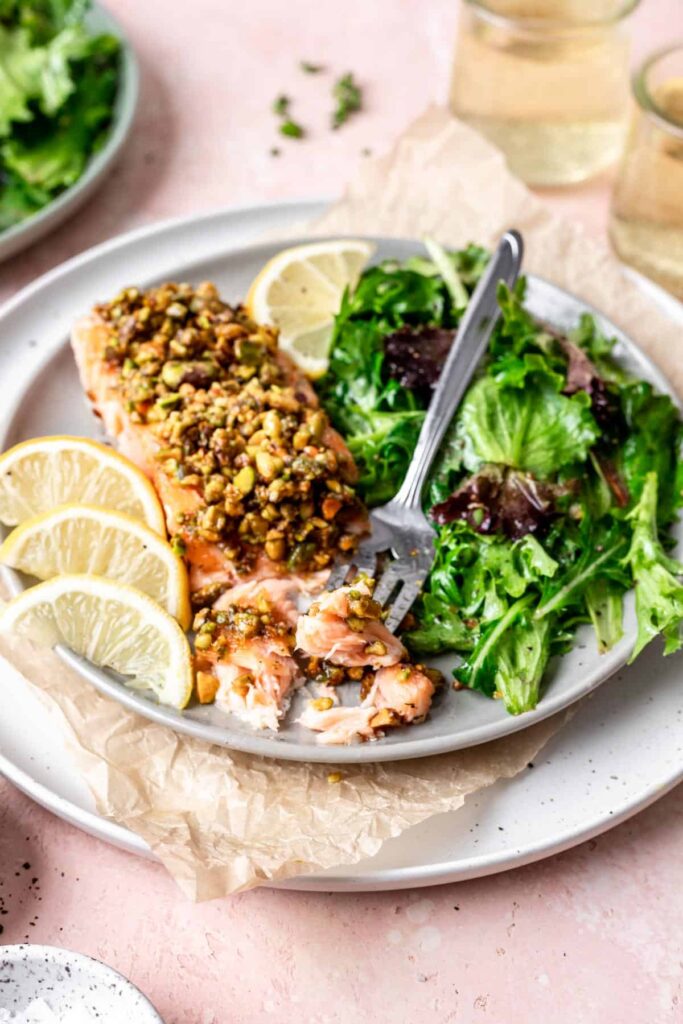Have you or a loved one recently had a stent, and are wondering if there is a specific diet after stent placement?
Well, you aren’t alone. There is an increasing prevalence of atherosclerosis or hardening of the arteries and heart disease. In fact, it’s becoming a global burden (1).
As a form of treatment for plaque buildup, stents are used as a clinical strategy to help with heart health. Even former US president Bill Clinton has had a stent placement (2).
This article will discuss what foods to eat after stent surgery and a diet after the stent implant which includes a one-day post-stent diet menu.
Top Takeaways
- Importance of Diet After Stent Placement: After receiving a stent to improve blood flow in arteries, maintaining a healthy diet is crucial for recovery and long-term heart health.
- Recommended Heart-Healthy Diets: Consider following heart-healthy diets such as the Mediterranean Diet, DASH Diet (Dietary Approaches to Stop Hypertension), or a Vegetarian/Vegan Diet. These diets emphasize plant-based foods, whole grains, lean proteins, and healthy fats to manage blood pressure and cholesterol levels.
- Top 15 Foods to Include: Incorporate foods like oats, barley, olive oil, chickpeas, walnuts, salmon, and leafy greens into your diet. These foods can help lower cholesterol, regulate blood pressure, and support overall heart health.
- Lifestyle Factors: In addition to dietary changes, focus on lifestyle improvements like quitting smoking, maintaining a healthy weight, managing stress, and staying physically active. Regular check-ups with a healthcare provider are essential for ongoing heart health monitoring.
What Is A Stent?
A stent is a small wire mesh tube that is placed in an artery to widen it and help your blood move more freely.
A stent surgery involves a few steps. First, a mesh tube is accompanied by a balloon catheter. The balloon is placed over the tube which will be inflated once inside the artery to expand the size and open up the artery.
Once the stent is secured, the balloon is deflated and removed while the stent remains in your artery permanently.
This non-surgical procedure is called an angioplasty that is prescribed to open arteries with cholesterol build-up to assist blood flow. It is a widely accepted treatment for coronary artery disease.

How Does A Stent Help?
The build-up of plaque within your heart artery can reduce blood flow (causing high blood pressure) and increase the risk of heart complications such as heart attacks, strokes, and symptoms of heart diseases, including chest pain, shortness of breath, or numbness in extremities.
A stent keeps your artery open to relieve uncomfortable symptoms and lower the risk of future heart attacks and strokes by providing sufficient blood flow to support the heart and its muscles. The artery will not collapse or close again post-procedure since the stent is permanent.
Unfortunately, it does not completely prevent atherosclerosis which is the hardening of coronary arteries due to the build-up of deposits inside the arteries. Thus, it’s important to manage heart disease by eating well, exercising more, taking prescribed medications, and managing stress.
If you are looking for an after angioplasty diet chart, I recommend this FREE PDF download.
Diet After Stent Placement
Why Is It Important To Eat Well After Stent Placement?
- Food provides energy and nutrients for recovery after a stent implant
- Heart-protective nutrients help manage blood pressure to keep blood flowing
- Eating enough is important even if you experience decreased appetite after stent placement
- Eating specific foods helps to regulate emotional changes and anxiety
- Eating well reduces the risk of plaque formation and buildup in your arteries again
Diets After Angioplasty
Following one of these diets after stent placement can be a good choice. They are also recommended diets after heart attack and stents.
Mediterranean Diet
The Mediterranean diet is known for its heart health benefits by incorporating fruits and vegetables, whole grains, nuts and legumes, olive oil, lean meat, and fatty fish. These foods can unclog arteries.
It is a perfect diet after angioplasty because it has a moderate amount of red meat and dairy products lower the intake of unhealthy fats. Additionally, the diet depends on herbs and spices to create a diverse flavor profile instead of relying on salt, and overall provides a well-balanced diet.
You can even eat out on the Mediterranean diet.
A study involved 7,447 participants in 3 different diet groups. One group followed a Mediterranean diet with olive oil, one following a Mediterranean diet with nuts, and one following a control diet or the typical American diet (3).
Results showed that people who followed a Mediterranean-style diet had a 30% reduction in heart disease in high-risk individuals compared to individuals in the control diet (3). Thus, a perfect diet after heart stent.
DASH Diet
The DASH diet, (an acronym for Dietary Approaches to Stop Hypertension) is another great diet after angioplasty. focuses on managing blood pressure by increasing intakes of heart-healthy food groups including fresh fruits and vegetables, whole grains, nuts and seeds, lean protein, and low-fat dairy products (4).
These are foods that can lower blood pressure.
In addition, the DASH diet lessens intakes of nutrients like sodium and saturated fat which are both contributing factors to heart complications. This diet also encourages more physical activity to strengthen heart muscles.
According to a meta-analysis of the DASH diet on cardiovascular risk factors, the diet has been proven to lower blood pressure as much as some anti-hypertensive medications (5).
Lowering blood pressure allows less pressure and damage on the artery walls because the blood can move more freely through the arteries.
Read more about this diet with the top ten DASH diet cookbooks.
Vegetarian/Vegan Diet
Vegetarian and vegan diets are both heart healthy diets after stent. A vegetarian diet includes eggs and dairy while excluding meat, poultry, fish, and seafood. A vegan diet excludes all animal-based foods.
These plant-based diets do not rely on animal protein but rather plant-based alternatives such as soy, legumes, pulses, nuts, and seeds.
Not only are they good sources of protein, but they also contain healthy fats and soluble fiber that can lower LDL cholesterol, a “bad” cholesterol, and total cholesterol levels (6).
Expert Tip
Just like any other medical procedure, after stent placement, you might experience a lessened appetite due to the stress on your body. This is typical and eating nourishing food at regular intervals can minimize complications and foster your recovery.
Try eating 5-6 small meals, cholesterol lowering juices or snacks full of protein and healthy fats when your appetite is low.
Smoothies and soups are great options as they are easy to swallow, hydrating, and provide vital nutrients for recovery.
Foods To Include More Often
Start including these foods for stent patients.
Vegetables And Fruits
According to Statistics Canada, in 2021, only 21.8% of Canadians 12 years and older consume fruits and vegetables 5 or more times per day (7). Each year, the percentage drops even though Canada’s Food Guide recommends filling half your plate with this food group (8).
Vegetables and fruits are major sources of fiber which aids in digestion. Soluble fiber specifically regulates your cholesterol level by dissolving in water and forming a gel-like mixture that can trap and prevent LDL cholesterol from entering the bloodstream.
A diet rich in fruits and vegetables has significant positive effects on heart disease. An increase from less than 3 to more than 5 servings per day could reduce the risk of heart disease by 17% (9). Thus, small changes can have significant protective benefits.
An easy way to incorporate more fruits and vegetables is to drink smoothies. Frozen and fresh produce is nutritionally similar so choose whatever option is convenient for you!
Whole Grains
Consuming 2.5 servings of whole-grain products a day can lower the risk of having a heart attack, stroke, and clogged artery by 21%. Whole grains can lower total cholesterol and LDL cholesterol levels, thanks to the soluble fiber (10).
When looking at your plate for lunch and dinner, try filling 1/4 of your plate with whole grains (8).
Whole grains are accessible in grocery stores and can be great staples for your diet, including barley, quinoa, brown rice, oatmeal, popcorn, whole-wheat flour, whole-grain breakfast cereals, whole-wheat baked goods, whole-wheat past to name a few.
It is important to read food labels carefully as some whole-grain options are often confused with refined grains. The first ingredients on the ingredient list should read “whole grain ___.”
Olive Oil
Olive oil is the key contributor to the Mediterranean diet that protects the heart. It is a good source of monounsaturated fatty acids which can lower your LDL cholesterol.
It also contains polyphenols which offer anti-inflammatory benefits. Extra-virgin olive oil has the highest amount of this antioxidant among different types of olive oil.
7,216 individuals at high risk of cardiovascular disease, aged 55 to 80, followed a Mediterranean diet supplemented with nuts and extra-virgin olive oil. The study concluded that extra-virgin olive oil consumption is associated with a reduced risk of cardiovascular disease and mortality (11).
Don’t like olive oil? Try some healthy olive oil substitutes.
Use olive oil in:
Fatty Fish
Fatty fishes such as salmon, sardines, trout, and mackerel are excellent sources of omega-3 fatty acids. These fish can improve blood flow by lowering blood pressure and taking pressure off of your arteries (12).
The American Heart Association recommends consuming these fatty fish 2-3 times per week.
Here are some great recipes to try, or read more about the difference between Pacific vs Atlantic Salmon.
Plant-Based Protein
With the rise of plant-based diets, legumes, nuts, and seeds are great plant-based proteins that provide more fiber while lower in saturated fat compared to animal-based protein.
Eating an array of plant-based food can satisfy your amino acid requirement.
Besides being great protein sources, legumes, nuts, and seeds also provide healthy fats which can lower LDL cholesterol, and are great for overall health. In fact, it’s an important part of the Portfolio Diet, a diet designed to lower your cholesterol levels.
Remember to opt for unsalted nuts and no salt-added nut butter. They are great options not only for plant-based diet followers but for those building a heart-healthy diet.
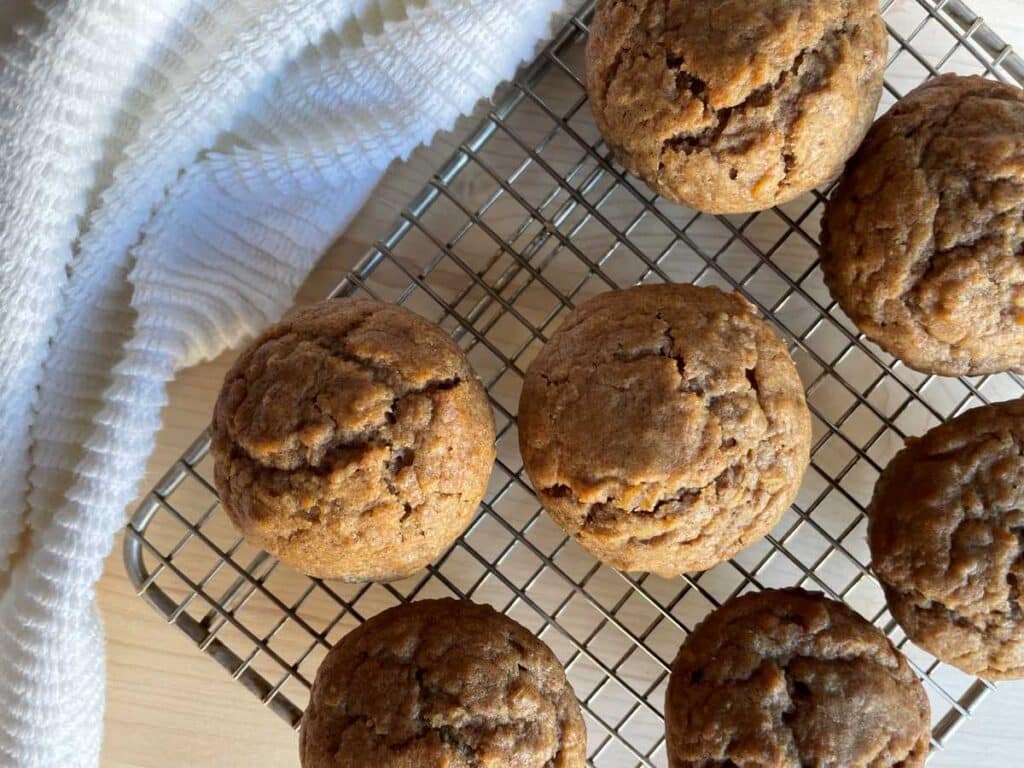

Cooking Methods
Cooking at home allows you to exercise your control over the ingredients and cooking methods.
Just like specific foods that are best to consume, there are certain cooking methods that are heart-healthy instead of just frying, including steaming, poaching, and sautéing etc. (13).
However, if you are craving fried chicken, choosing the right oils is the key. Avocado oil has a high smoke point which makes it a healthy option for high-heat cooking methods.
Mindful Eating
Mindfulness is a practice based on Zen Buddhism which is to be present and aware of yourself and your surroundings. This practice can be implemented in many aspects of your life, and it has produced positive changes in one’s eating behavior.
Mindful eating involves listening to your internal cues (hunger and satiety, emotions, thoughts) and implementing changes to external cues (portion size, environment, eating rate).
Jessica Monroe has identified 5 basic mindful eating principles and strategies to apply those principles (14).
| Principle | How to Apply |
| 1. Reduce eating rate | Chew thoroughly before swallowing, take smaller bites, pause between bites, and/or drink water between bites |
| 2. Assess hunger and satiety cues | Assess the reason for eating (emotions vs hunger) and use a hunger scale to assess the level of hunger |
| 3. Reduce portion sizes | Serve less food, use smaller dishes, and order smaller portions at restaurants |
| 4. Reduce distractions while eating | Turn off television and music, sit at a table, and focus on enjoying food |
| 5. Savor food | Make eating pleasurable, use all senses to enjoy food, and create a positive, pleasant environment to eat |

Top 15 Foods To Eat For Diet After Stent Placement
Find a list of foods to eat after stent surgery.
Oats
Among various whole grains, oats contain the second most amount of beta-glucan, a soluble with cholesterol-lowering properties.
Oats also have antioxidants that can combat free radicals which increase the risk of atherosclerosis and cardiovascular diseases (15).
There are many ways to enjoy oats but a warm bowl of oatmeal post-surgery can be comforting and nutritious as you can add your toppings of choice. I suggest trying these super satisfying protein-baked oats.
Barley
Barley beats oats when it comes to the amount of beta-glucan it has. They both have similar cardiovascular benefits.
If you are tired of eating oatmeal, barley can be a great alternative. This recipe of barley and sesame porridge will provide comfort post-surgery.
Popcorn
Another high-fiber and high-antioxidant whole grain is popcorn. Theatre popcorn and store-bought popcorn can be high in trans fat and sodium which are contributors to heart diseases.
Instead, try popping your own popcorn kernels on the stove, topped with olive oil and spices of choice. Some great options are black pepper for a great plain snack, nutritional yeast for a cheesy treat, or cinnamon.
Olive Oil
As we have discussed above, olive oil contains monounsaturated fatty acids alongside polyphenols that can unclog your arteries by lowering the “bad” LDL cholesterol.
When cooking with oil, you can use olive oil to add healthy fats to whatever you’re eating. It can be an addition to any dish you cook, like making your own cherry vinaigrette.
Chickpeas
Chickpea contains potassium, an essential mineral that helps cells stay connected to maintain the heart’s rhythm and overrides the impact of sodium by increasing sodium excretion in your urine (16)
Chickpeas are such a versatile legume and can be enjoyed in many ways. Try this Chocolate-covered chickpeas recipe to satisfy those with a sweet tooth.
Lentils
Like chickpeas, lentils also contain potassium that counters the effects of sodium and helps manage blood pressure.
A lentil burrito can be a quick and inexpensive meal that you can customize. Try it tonight!
Walnuts
Walnuts contain omega-3 fatty acids, one of the unsaturated fats that support the contraction and relaxation of the arteries which maintain the heart rhythm and prevent strokes.
Opt for plain or roasted walnuts to watch your sodium intake.
Walnuts make great toppings for yogurt, oatmeal, and salad which add an additional crunch factor to your snacks or meals.
Spinach
Spinach contains lutein, an antioxidant closely related to vitamin A. It has been associated with a lower risk of coronary heart disease and stroke which might prevent atherosclerosis in a systematic review (17).
A Swedish study found that the best way to maximize the benefits of spinach and its lutein content is to eat it raw in smoothies or juices (18). Smoothies are great for recovery as they are hydrating with a plethora of nutrients beneficial for recovery.
Another great way is to add it to your pasta sauce, like this edamame pasta sauce recipe.
Berries
Berries are high in fiber, vitamins, and antioxidants which can lower blood cholesterol and oxidative stress.
A study of individuals with metabolic syndrome (heart disease, stroke, type 2 diabetes) who consumed beverages with blueberries found a significant decrease in blood pressure LDL cholesterol control compared to the control group (19).
Berries can be toppings of yogurt or oatmeal. For smoothie lovers, check out this tropical berry smoothie recipe.
Tomatoes
Potassium in this juicy fruit/ vegetable can relax your artery walls to ensure normal blood flow and regulate blood pressure.
Lycopene, the pigment that gives the tomato its red color that has been shown to have a positive effect on those with atherosclerosis, metabolic syndrome, hypertension, and stroke (20). However, results warrant further research.
This sardine omelet recipe is high in protein with anti-inflammatory benefits and might be what you are looking for.
Carrots
Beta-carotene gives carrots an orange appearance. The conversion of beta-carotene to vitamin A with the help of the BCO1 enzyme has been shown to reduce LDL cholesterol levels in young adults (21).
However, BCO1 is less active for some people due to genetic variation. Thus, eat more carrots and other vitamin A-rich foods to reach the recommended vitamin A intake.
Avocado
Avocado has plenty of healthy fats such as oleic acid which helps lower LDL cholesterol. It is also rich in soluble fiber and fiber.
A study found that replacing half a serving of any source of fat (butter, cheese, processed meat, etc.) with avocado can lower the risk of cardiovascular disease 16-22% (22).
For anyone looking for a quick and simple snack idea, try out this sardine dip with avocado.
Salmon
Salmon is rich in omega-3 fatty acids and potassium which both lower blood pressure. Astaxanthin, an antioxidant that gives salmon its red hue, also reduces “bad” LDL cholesterol and increases “good” HDL cholesterol (23).
Experiment with these flavorful, heart-healthy salmon recipes to expand your palate.
Sardines
Like salmon, sardines are one of the fatty fish high in healthy fats. Canned sardines are often high in sodium so you should enjoy them by making your meal low-sodium and having smaller portions.
Sardines can be eaten with toast, crackers, and tortilla chips. Some might enjoy a sardine dip that is creamy, citrusy, and delicious.
Water
When dehydrated, the amount of blood being pumped throughout the body decreases which makes your heart rate and blood pressure increase and your body retains more sodium (24). All of which increase the risk of heart disease.
Staying hydrated not only supports essential body functions but also regulates your blood volume, heart rate, blood pressure, and electrolyte (sodium) level.
You can drink plain water or add fruits and vegetables to spice things up. Eating plenty of fruits and vegetables with high water content such as watermelon, cantaloupe, pickles, spinach, apples, etc. can also up your water intake.
One Day Post Stent Diet
- Breakfast: Overnight Oat Bran & Choose the Best Coffee Creamer For High Cholesterol
- Lunch: Black Bean Toast
- Dinner: Salmon Fish Cakes
- Snack 1: Watermelon Smoothie
- Snack 2: Steel Cut Oat Granola
Other Things To Consider
A stent is not an absolute solution to your problem. It’s important to engage in a heart-healthy lifestyle post angioplasty procedure to reduce risks that increase the chance of a heart attack. Improve your overall health by making lifestyle changes like:
- quitting smoking
- maintaining a healthy weight
- eating well
- reducing stress
- checking with your doctor about starting an exercise program
- controlling blood pressure, cholesterol levels, blood sugar, and other chronic conditions
Summary: What To Eat After Stent
If you are wondering what foods to eat after stent surgery, I recommend starting with adding vegetables, fruits, whole grains, plant proteins, fatty fish and olive oil to your eating plan.

Final Thoughts
Small habits lead to big changes. You should start small and simple to make sustainable changes to your lifestyle, including your diet after stent placement.
Be sure to speak with a doctor or dietitian before making any changes to your diet to make a plan specific to you.
You can do this!
If you are looking for an after angioplasty diet chart, I recommend this FREE PDF download.
This article was written by Shirley Le, Nutrition Student, and Veronica Rouse, MAN, RD, CDE.





